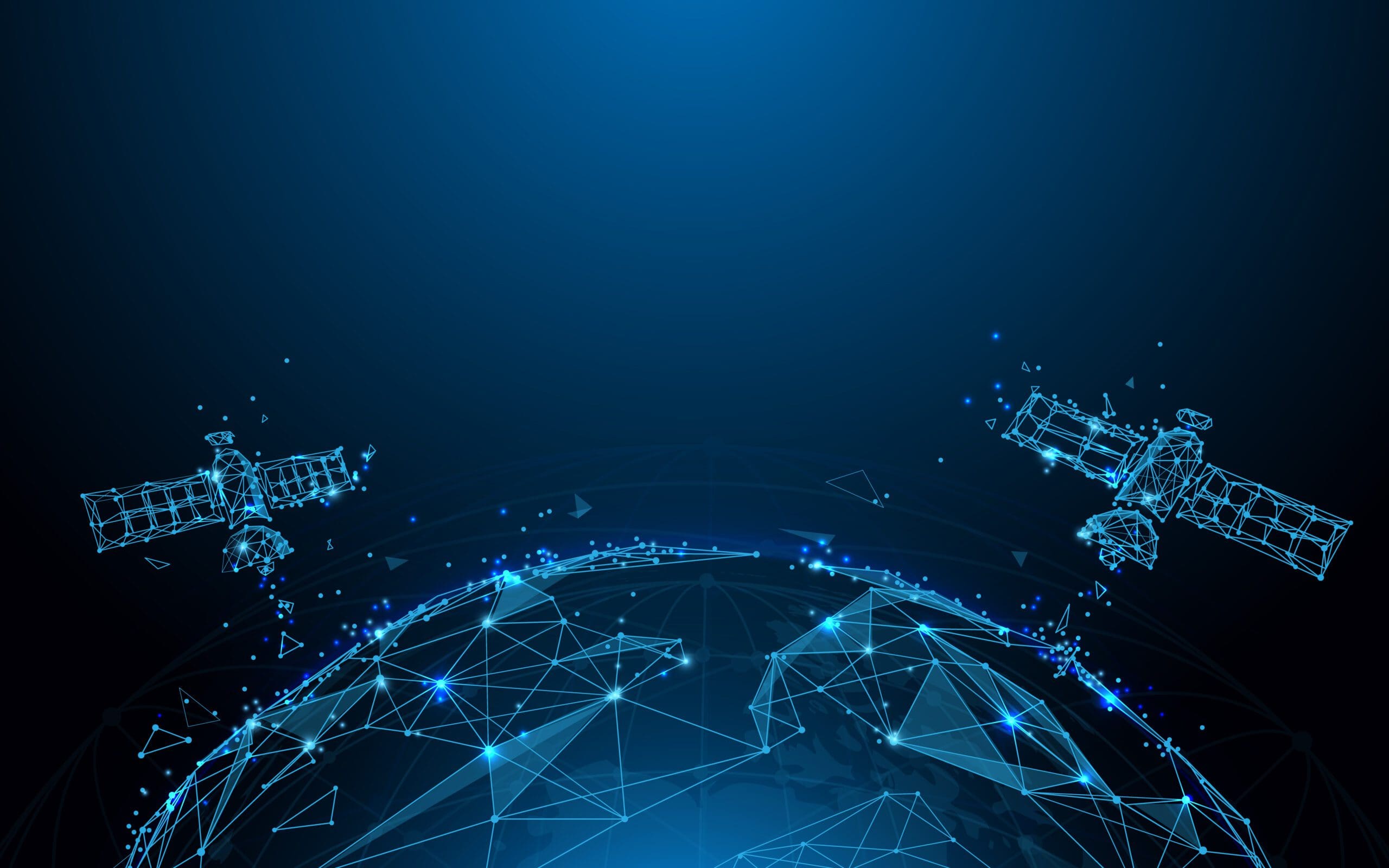The deployment of mega-constellations and smallsats providing a sheer number of sensors in Low Earth Orbit “LEO” is driving the need for satellite data centers, to unleash the power of these emerging platforms.
In a 3-part series, we will cover how Space systems are following in the footsteps of Terrestrial systems and will evolve to enable AI at the edge of space in Space-IoT™ satellites:
- Stage 1: Space data collection
- With thousands of LEO satellites in orbit collecting data, a few Data Space Centers in LEO or MEO will collect big data for AI model generation. The sheer number of satellites sending data acts as a multiplier that requires the Data Center to accept data at speed in a temporary buffer before it is committed to long term storage. This data is then sent to Earth for AI model generation.
- Stage 2: Security and latency of data in space and in transit
- The stored data may be public domain or may be a national asset. The data in these Space data centers need to be secured and then transmitted back to earth and in the long run to Data Centers in GEO orbit using either traditional RF communication systems or lasers.
- Stage 3: The ultimate datacenter in space
- Invention of selectors delivers high enough density MRAM to enable True High Density Data Centers to store data from LEO and MEO for generation of AI models in space without going back to earth. Space becomes autonomous and independent of Terrestrial support eliminating the need for a link to Earth. This is essential if we are to deploy a similar model around the Moon and Mars. Backhaul to earth will not be an option.
Stage 1: Space Data Collection
As we highlighted in our previous Space Computing blog series, Space is becoming an extension to the edge of Industrial cloud computing.
Over the last couple years, the major terrestrial cloud providers (Amazon Web Services – AWS, Google Cloud, Microsoft Azure) have been partnering with the satellite constellation providers to enable proliferation of smallsats and sensor platforms. This has enabled new entrepreneurs to add new sensor platforms in space with two benefits:
- Access to Terrestrial computing platforms for AI model generation
- Contact point through their infrastructure without the need to create new dedicated ground stations
In 2020 Capella Space worked with AWS to kick things off in leveraging their data centers not only as that, but also as ground stations (spearheading the start of the AWS Aerospace & Satellite Solutions Division). SpaceX followed by partnering with Google Cloud for their Starlink LEO constellation. Microsoft Azure then followed with SES’s upcoming 03b mPower MEO constellation and continued with Telesat and CloudOps for their upcoming Lightspeed LEO constellation.
These partnerships have been key to further enable the proliferation of the satellite platforms and open opportunities to new entrants to provide the ecosystem baby steps to further realize Space-IoT™.
The new intelligent self-aware LEO satellites with AI engines are still relying on terrestrial systems for model training and data analysis.
The links which today are RF links from the LEO satellite to a base station and Fiber from the base station to the processing centers cause huge latency and are not as secure as they could be with some upcoming more secure capabilities.
The new beginning: 1st generation data centers in space (Unibaps’ SpaceCloud® & LEOCloud) initially begin as processing entities (SBCs or subsystems) on Space IoT™ LEO Satellites in-orbit to perform some AI/ML analysis and data aggregation. Just like terrestrial systems data flow is minimized by compressing the data stream using sensor fusion and only sending and receiving changed data.
The 2nd generation data centers in space will collect data from 100’s Space IoT™ LEO Satellites in orbit, do some initial processing, consolidate and then send back to earth via a dedicated secure link in the background. These data centers act as aggregation points to send and receive data back to Earth. Just like terrestrial systems data flow is minimized by compressing the data stream using sensor fusion and only sending and receiving changed data: This is accomplished by local processing and removing duplicated data. Space-IoT Satellites will use the extreme advantage and performance of laser communication in space to send the continuous sensor data collected to in-orbit data centers.
System architectures of these 2nd gen data centers in Space are evolving with the introduction of high reliability Space Grade portfolio of high-density, high-performance STT-MRAMs. Avalanche Technology, help enable the space data centers by providing the L4 cache of the streaming links from hundreds of LEO Space IoT™ satellites and to the ground base stations which as bulk storage for data analytics and ML/DL model generating Computers.
In the second blog we will discuss the security and latency benefits of this approach as well as highlight the next key item to realization of the satellite data centers – Affordable and Mass Volume producible Laser Communication Terminals – Space Micro, CACI, MIT-LL, Airbus, Mynaric, BATC, GA, and SpaceX.


